The Ultimate Guide To Growing Peas

by
Angie Rose
(IC: blogger)
2 Materials
Easy
When you look out your window and you notice your daffodils beginning to bloom, it's time to plant your peas! After a long winter, peas are one of my favorite spring crops to grow. There are many types of peas you can harvest from your garden. Snap peas, snow peas and garden peas all have slightly different flavors and different methods of prep. If you are planning on growing peas, a good time to get them started is sometime in March a little before your average last frost date has passed. They can be started earlier in a hoop house or covered garden. You can also start the seeds indoors, and once they sprout, transfer them outside. Last winter, I planted them under a hoop house and was able to enjoy an early crop! Peas are very easy to grow and perfect for someone who is just starting out with growing edibles. If you follow these tips below, you will soon be enjoying a plethora of peas!
CHOOSING YOUR PEAS
Snap Peas - Snap peas or sugar snap peas have a sweet flavor and a crunchy texture. You can feel free to eat the whole pod raw. You can also cook these peas, and trust me when I say they are delicious! These are probably my favorite variety to munch on while I'm busy doing daily garden chores. Most of them don't make it into the house. Some snap peas have strings, and I tend to choose the "stringless" variety. The strings can be tough to chew and sometimes have to be removed before eaten.
- Favorite Varieties: Sugar Snap pea, Sugar Ann Snap pea, Spring Bush Tendril pea
Snow Peas - Snow peas or Chinese peas are flat and crisp with tiny peas inside. Again, the whole pod can be eaten, but the strings are usually removed first. They have a delicious mild flavor and can be enjoyed raw or cooked. They are the perfect addition to any stir-fry. Even though I am tempted to enjoy them raw from time to time, I usually save them to be whipped up in a tasty summer dish. Make sure to pick these peas before they get plump. I learned this the hard way!
- Favorite Varieties: De Grace snow pea, Green Beauty pea, Mammoth Melting Sugar snow pea
Garden Peas - The very first peas I planted were garden peas! Garden peas or English peas have firm and rounded pods. The tasty round peas inside need to be removed from the pods or shelled before eaten. The pods can be discarded and composted. The peas found inside are sweet and can be eaten raw or cooked. You want to make sure you don't allow your peas to grow to big. The flavor tends to change, and they become more starchy. You also want to make sure you cook these fresh or freeze them after picking to get the best flavor.
- Favorite Varieties: Little Marvel garden pea, Alaska garden pea, Wando garden pea
- Rookie Mistake - When I first started gardening, I bought a bunch of seed packets containing different varieties of peas. I planted them all together on the same trellis, thinking why not? Well, they all grew and I had no idea what was what. I didn't know which ones were garden peas and which ones were snow peas. If you are planning to grow different varieties to enjoy, plant them separately and label them! This makes life so much easier.
PLANTING YOUR PEAS
Once you have chosen your varieties, now it's time to get planting! The most important thing to do is read up on the variety you have picked. You can start your seeds indoors or outdoors. If you are planting them outdoors, make sure your soil temperature is at least 40 degrees F. They can handle some frost and snow, but the growth rate is not fast. The cooler your soil temperature, the slower your plants will grow. I learned this when starting them under my winter hoop house. My plants grew, but instead of taking weeks to sprout, they took months. This can be done, but you just need to have patience! If you want to find out the best time to start your seeds, you can use this helpful starting date calculator.
Starting Seeds Indoors - Start your seeds 3 to 4 weeks before you plan on planting them outdoors. They grow quickly, so you don't want to start them too early. Make sure you start your seeds in rich, seed starting soil mix. Put your new seeds under a grow light, and make sure this is on for 10 to 12 hours a day. Cover with 1 inch of fine soil and make sure to keep moist. Your seeds should emerge within 7 to 14 days.
Starting Seeds Outdoors - If you are planting in your raised garden bed, your seeds can be planted before your last frost date. I like to wait 8 weeks before my last frost date. I use protective measures like frost blankets, and I cover them at night. If you are starting your seeds in the ground, wait until 6 weeks before your last frost date. Plant your seeds in average soil in an area that receives full sun. I like to grow in rows about 6 inches apart. I try to give my seeds at least 2 inches of space. If you don't, you may have to do some thinning as your plants grow.
Tip - If you want to enjoy multiple harvests, succession planting is the way to go with this crop. I like to give this crop a 10 day interval in between planting times. No matter how much you harvest, your pea plants will eventually lose steam and not produce as much. This method works best for me. I encourage you to experiment a bit and find what works best in your climate and growing zone.
Products I Recommend: Burpee Bean & Pea Booster
REACH FOR THE SKY
The first time I grew peas, I made the mistake of not trellising them early enough. I was growing a dwarf variety, and completely underestimated how messy they can get at any size. Even if you aren't getting a tall variety, they can become a tangled mess very quickly. They have tiny tendrils that grab onto whatever is close, even if it's another tendril. If you want to go in and clean them up once they have reached a certain size, you can really damage your plants. So the cautionary tale here is, even if you pick a smaller variety, give them some type of support. This will keep your plants happy and healthy. Most importantly, this will keep you sane!
Trellis options - You can use a wooden or metal trellis. Instead of going for something tall and skinny, I would go for something wider that still has some height depending on how many plants you have. I have tried very small trellises, and it becomes a mess once your plants outgrow it. Make sure to check on the package before you plant, that way you know what size trellis you are looking for.
Another great option is creating an inexpensive teepee using bamboo stakes and wire or twine. I personally love this option. This really holds up in bad weather and heavy winds. I grow all my beans this way. I have switched some of my peas to this method over time.
The third option is using wire fencing. You can purchase this and pretty much make a support system to whatever custom size you require. The wire is sturdy, and the taller the plants really appreciate this. Again, it's easy and inexpensive! Whatever supplies you can get your hands on, even strings and stakes, trust me when I say something is better than nothing!
Be Prepared: Before you start building your own trellis, it's best to have a good pair of wire cutters on hand. I recommend Fiskars Garden Multi-Snip. This razor-sharp blade makes working with heavy duty materials so much easier.
• Dwarf/Bush Varieties - Anywhere from 2 to 4 feet tall
• Tall Climbing Vines - Anywhere from 6 to 9 feet tall
HARVESTING YOUR PEAS
Most peas are ready to be harvested in about 3 months. Make sure you check your seed packets, because every variety is different. You can start to tell they are ready to pick when the coat of the pod becomes waxy. The peas begin to swell, and the color is bright green. It's better to pick them smaller. These tend to be sweeter. Try not to wait too long and let them get too big. I've learned that they mature from the bottom up, so this is an easy way to check on your plant.
These healthy treats taste best fresh. The longer you want, the starchier they taste. If you can't eat them right away, make sure to store them in the refrigerator or freezer right after picking. Don't be afraid to shell your peas. I've actually found this to be a rather relaxing task!
There are so many different ways to cook and snack on these flavorful plants. They can be added to just about any dish or eaten alone as a side. Last year, I shared a fun recipe on the blog. I like to enjoy them in salads and of course, a stir-fry.
You can check out my recipe here - Easy Sumer Garden Stir-fry
My biggest advice is to really enjoy and try every part of your pea plant. Take advantage of how beautiful the blooms and flowers are in the garden. Taste the peas fresh and cooked, and don't forget to add the shoots to your salads. They are just as delicious as the peas themselves! Check on them daily, and don't be afraid to pick! The more often you pick, the more pods you will get. I didn't know this fact when I first started. I'm happy I learned that over time. Don't forget that these plants benefit your garden soil, adding nitrogen and making it nice and rich. It's so much fun trying different varieties. Every year, try something different if you like.
Are you thinking of growing peas this spring? Do you have a favorite kind of pea you like to grow? Tell me all about it in the comment section below. 

Enjoyed the project?
Suggested materials:
- Burpee Bean & Pea Booster (Burpee)
- Fiskars Garden Multi-Snip (Fiskars)

Want more details about this and other DIY projects? Check out my blog post!
Published April 3rd, 2017 3:25 PM
Comments
Join the conversation
3 of 44 comments
-
 169756
on Apr 23, 2017
169756
on Apr 23, 2017
Great to know. A little late to start from seed probably, but I'll see if I can find any small plants to buy.
-
Good luck with your peas Kathleen!
 Angie Rose
on Apr 23, 2017
Angie Rose
on Apr 23, 2017
-
-
-
 Cherry
on Jun 28, 2018
Cherry
on Jun 28, 2018
Growing peas again this year. When we were kids, our mom grew them, but stopped after a few years, said she wasn't getting enough out of them to make it worth while. What she didn't know was that my sister and I were eating them and feeding the empty pods to the dog, who loved them.
-



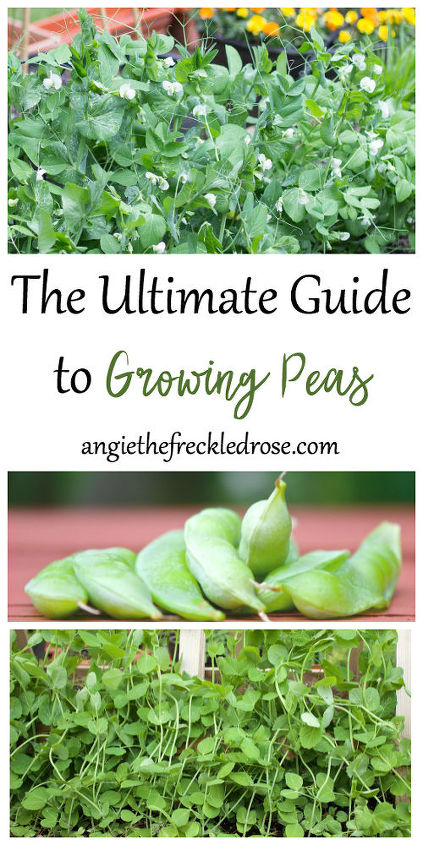

















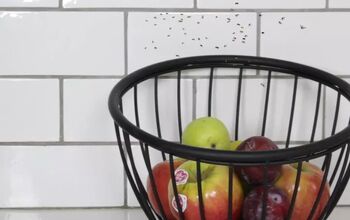

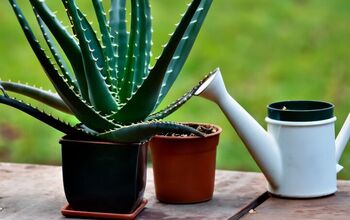
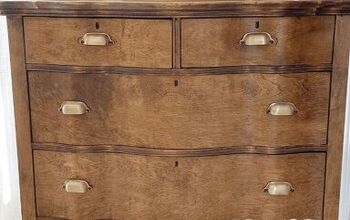












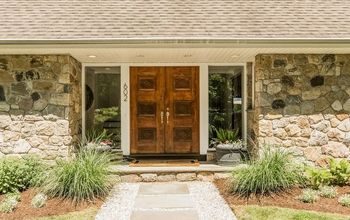
Frequently asked questions
Have a question about this project?
Do you have any suggestions to stop powdery mildew? Despite very careful watering this season I lost my plants for the second time.
This will be my 1st attempt growing these peas. Do birds try to steal them? If so, what kind of deterrent works best to prevent it?
I've used leftover xmas trees for years to grow my peas. I just plant the tree into the ground and Preston you don't have to make anything to grow your peas. Plus it doesn't require support string or ties. Its more than enough support and it looks amazing. Has anyone else tried this or something else?